DC Area Base Guides
About Virginia, Maryland, & Washington, d.C.
About
Orders to the D.C. area are often accompanied by excitement, followed by a wave of apprehension. D.C. is a massively complex metropolitan area and can be intimidating when deciding where to live. Getting over the sticker shock, understanding the unique challenges of commuting around D.C., and managing expectations are vital to finding the right place to live. But once you tackle all that, you can enjoy everything that comes with living near the nation’s capital!
While choosing where to live can be daunting, the great news is that once settled; most people love their bubbles! School choices, especially in Northern Virginia, are abundant, and career opportunities abound as D.C. is host to professionals in various fields.
Options abound, from full-time jobs to teleworking, but these opportunities come with additional considerations for finding a home. The D.C. area often referred to as the “DMV” (for D.C., Maryland, and Virginia), is one of the best assignments in the military for working spouses. DMV traffic is among the nation’s worst, so finding a home with easy commutes to two different jobs is no easy task.
On the upside, almost everything from parks to libraries, not to mention the museums, is well-funded and free to enjoy. Diversity and rich cultural experiences are plentiful, and the culinary scene is fantastic. Though the cost of living in this region is substantial, you can often find free activities and military discounts.
Professional sports teams include the Washington Redskins (NFL), Washington Nationals (MLB), Washington Capitals (NHL), and D.C. United (MLS), and the Washington Wizards (NBA). People in the area tend to be busy and active, and a competitive spirit permeates all the way down to youth sports.
The weather is almost as intense as the people, with all four seasons in full bloom: hot, humid summers; mild, colorful falls; cold, harsh winters; and breathtakingly beautiful springs.
The first step in choosing where to live is to determine your priorities. There are three main values, if you will, to consider: Home Size, Home Price, and Commute. You will be able to secure one, and potentially even two, of those values—but rarely all three. On each page, we’ll break down some of the more popular areas for military families and explain which values you’ll sacrifice to live there.
Pro Tip: If you come armed with this info before chatting with a real estate agent, they’ll have an enormous leg up in helping you find a home quickly. Efficiency and knowledge are crucial in this hyper-competitive real estate market.
Size
As with many urban cities and surrounding suburbs, the closer you are to D.C., the smaller and more expensive the home; if having a large house is a priority, you’ll live farther out and suffer a longer commute.
Price
Your money goes further as you radiate away from the District. The “price” you’ll pay for affordability is spending lots of “quality time” in your car. If you LOVE your car or need the time to decompress, go for it! There are also many alternatives to sitting alone in your vehicle for precious waking hours, like slugging, Metro, and VRE or MARC long-haul trains. Don’t worry; we’ll break it all down for you.
Conversely, to reap the benefits of a short commute and proximity to the District, you’ll likely need to be dual-income and willing to spend a significant percentage of your income on housing or be okay with a less-than-amazing home.
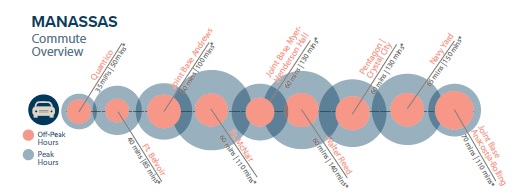
Commute
This is the big one. We cannot stress enough the importance of understanding the traffic situation! Listen up because this can make or break your experience in the D.C. area.
Legendary congestion on all of the main highways, an almost incredible number of people commuting into D.C., and the irregularities of road work, accidents, and weather, make commuting a primary challenge of life in the DMV. We’ve heard stories of two- to three-hour commutes one way, workers giving up and teleworking after moving 15 miles in two hours, and even people stopping off at a winery in the evening and trying again around 8:00 PM (our personal favorite).
You cannot look at distance on a map and equate that to commute time. It could take 30-plus minutes to drive eight miles in the city, and it’s a total gamble on the highways. Flex your creative commuter muscle, and you can discover some workarounds to these headaches. Living close enough to bike or walk to your installation or in proximity to a Metro station will alleviate some stress, and reverse commuting can be a sanity-saver. Also, don’t let anyone tell you that any area is 20 minutes from all the bases. Just walk away from them. It’s so much more complicated than that. But don’t worry—we’ll give you the legit scoop.
Remember, many people stationed at a D.C., Maryland, or Virginia base will work in multiple locations over the length of their time here. For example, those initially stationed at the Pentagon could report to Crystal City (Arlington) and then the following year is sent to Fort Belvoir (southern Alexandria) or Fort McNair (D.C.). You’ll want to know your spouse’s professional trajectory and consider that when choosing a home. Strike a balance for all possible assignments, or at least be okay
with the potential sacrifices.
Commuter Options
Metro – (Washington Metropolitan Area Transit Authority) Metro Rail serves D.C. and the surrounding areas with over 90 stations and more than 100 miles of track. The Metrobus supplements the rail system by connecting lines and stations to outlying communities.
Local Buses – Each jurisdiction has a local system that can also supplement the Metro system. If you are farther away from the District, you’ll rely on local buses more often.
Commuter Rails – Virginia Railway Express (VRE) and Maryland Area Regional Commuter (MARC) are long-haul rail systems for commuters.
DOD Shuttle – The Department of Defense operates a fairly robust shuttle system in the National Capital Region. This is an additional commuting option for many.
Bike/Run – There is an extensive multi-use trail system around the D.C. area and the surrounding bases. Many service members enjoy a scenic ride or run to work without stress.
Driving – If you are driving, familiarize yourself with HOV and Express Lane rules.
Ridesharing – There are all sorts of adaptations to carpooling. If you have three or more people in the car, you can take advantage of the HOV lanes (which can save you hours). Sometimes it’s tough to coordinate two other riders and destinations. Therefore, slugging was born. You can go to a designated slug lot and either line up to pick up passengers or hop in a car going in your direction—for free! There are websites and apps to help with coordination. Uberpool and Vanpooling are also variations of ridesharing.
Air Travel – Work trips, flights to see family, or vacations are accessible with three large airports: Washington Reagan National (DCA), Dulles International (IAD), and Baltimore Washington International
(BWI).
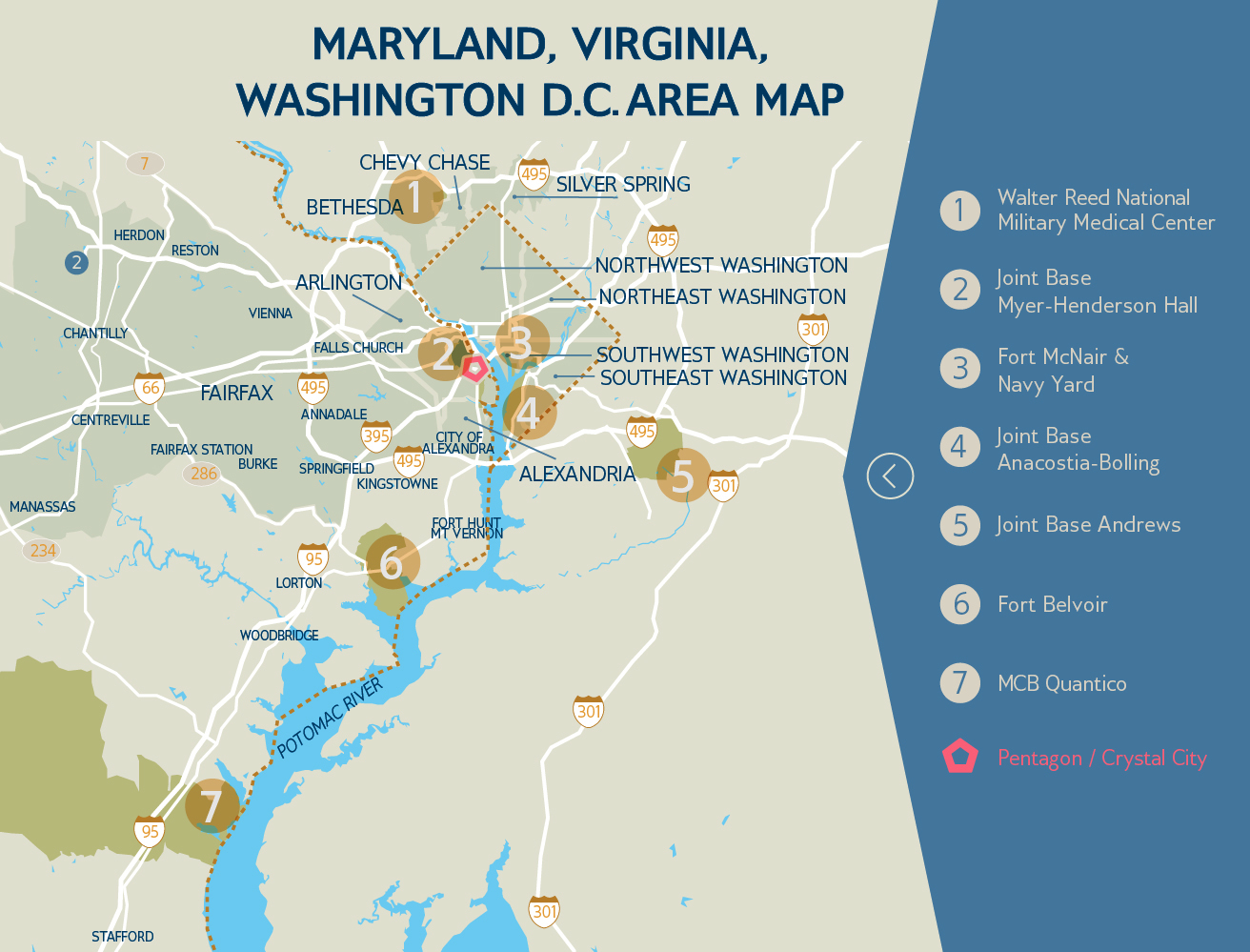
Looking at relocating?
Enter your information below and we will reach out to help the process.
KEY CONTACTS
JBAB Housing
Housing Services Center
21 MacDill Blvd.
Washington, D.C. 20032
PH: (202) 404-1840
Bolling Family Housing
Privatized Housing
8660 Angell St.
Washington, D.C. 20032
PH: (202) 562-2631
Liberty Park at Andrews
Housing Office
2097 San Antonio Blvd.
Joint Base Andrews, MD 20762
PH: (866) 944-7504
Military & Family Support –
Pentagon
1565 AF Pentagon
Room 5C1049
Washington, DC 20330
PH: 571-395-0408
JBMHH School Liaison Office
102 Custer Rd.
Bldg. 203
Fort Myer, VA 22211
PH: (703) 965-4950
Most installation services will be available Monday through Friday, 9:00am to 4:00pm. As always, call first to confirm hours and availability of services.
Helpful hint: Contact these offices early in the week during the morning time
About The Pentagon
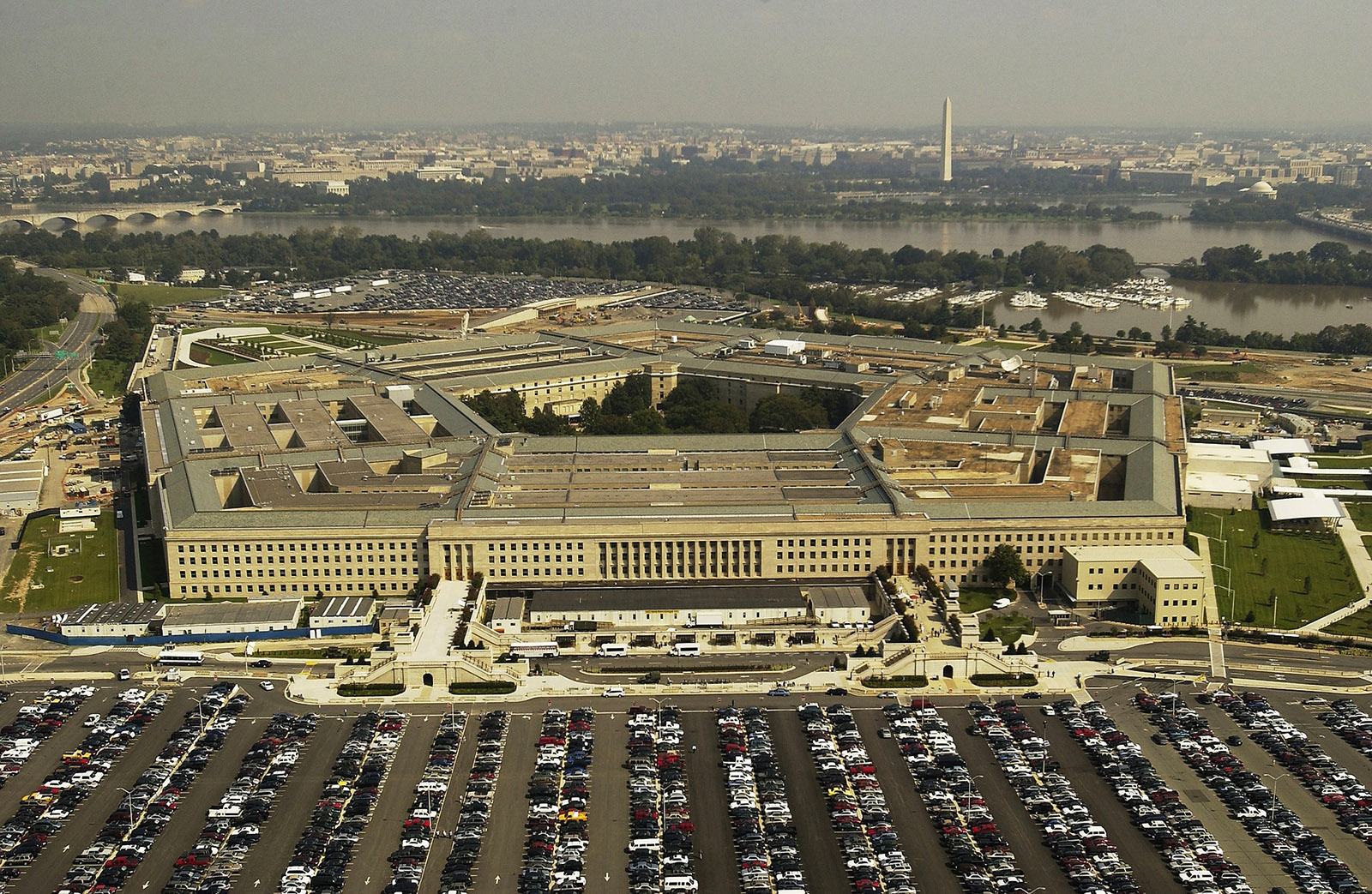
The Pentagon is a true American marvel. This immense structure is the largest office building in the world, claims four zip codes, and possesses a whopping six million square feet of floor space! The construction of the headquarters for the U.S. Department of Defense (once the U.S. War Department) has a storied history. The plans for the pentagonal design were based on the irregular shape of the proposed building site located east of Arlington National Cemetery. Plans for that location were scrapped, but the design and shape remained. The building was mainly constructed with reinforced concrete to conserve precious steel at the start of WWII. Builders also placed a series of ramps throughout the building instead of steel elevators. The structure was limited to five stories in height and two underground floors in another steel-preserving (and skyline-preserving) effort.
When assigned to the Pentagon, service members often report to alternate locations. There is no housing at the Pentagon, so if you would like to live on post, you will choose between Joint Base Anacostia-Bolling in Southwest D.C. or Joint Base Andrews in Maryland. There are offices in Crystal City, Arlington, where many work long hours, while some even report to offices in D.C. or other installations.
The Pentagon is located on the very tip of Northern Virginia, just across the Potomac River from Washington, D.C. Joint Base Myer-Henderson Hall and Arlington National Cemetery are to the northeast, and Washington Reagan National Airport is its southeastern neighbor. The Metro’s Yellow and Blue lines stop at the Pentagon, and several other public transit options are available for its almost 30,000 workers.
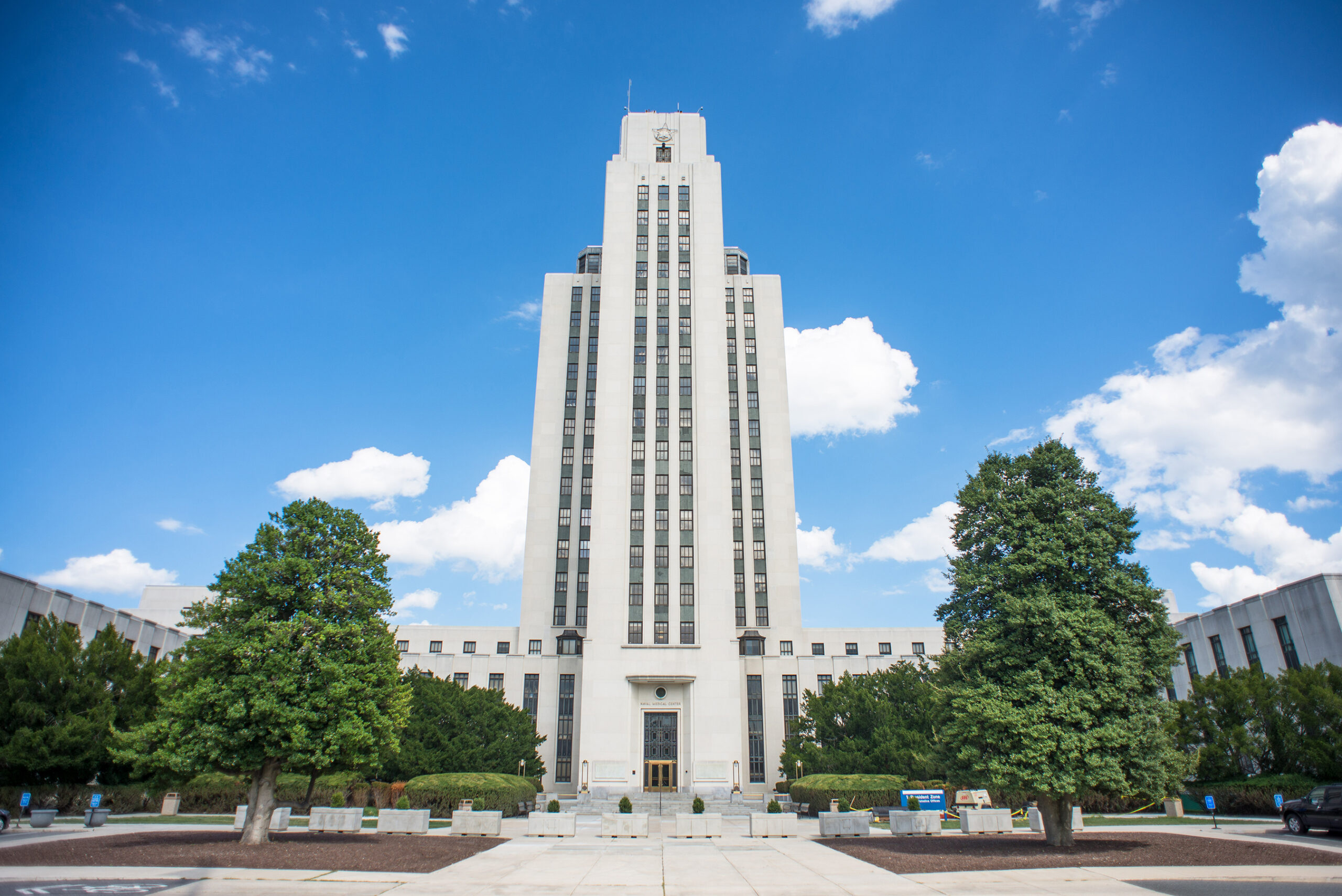
KEY CONTACTS
Naval Support Activity Bethesda
Family Housing
4650 Taylor Road
Bldg 17B, 3rd Floor Suite 3D
Bethesda, MD 20889
PH: (301) 295-6564
JBAB Housing
Housing Services Center
21 MacDill Blvd.
Washington, D.C. 20032
PH: (202) 404-1840
Bolling Family Housing
8660 Angell St.
Washington, D.C. 20032
PH: (202) 562-2631
School Liaison Office
9045 Beale Rd.
Bldg. 11, Rm. 135
Bethesda, MD 20889
PH: (301) 295-7849
Most installation services will be available Monday through Friday, 9:00am to 4:00pm. As always, call first to confirm hours and availability of services.
Helpful hint: Contact these offices early in the week during the morning time
About Walter Reed National Military Medical Center
The original Army General Hospital was located at Fort McNair and commanded by Major William C. Borden. After much petitioning by Major Borden and his friend and college classmate, Major Walter Reed, the Army decided to move the hospital to a new location in Northwest Washington, D.C. Major Reed was best known for discovering the transmission of yellow fever by mosquitoes. Unfortunately, he died from complications after an appendectomy before the hospital was completed, but in 1909 it was opened and named in his honor.
Over the past century, the original Walter Reed General Hospital saw the addition of many new buildings, educational institutions, parking pavilions, and a new hospital. The most recent transformation came during one of the last rounds of BRAC (Base Realignment and Closure). In 2011, the long-serving Walter Reed Army Medical Center in NW Washington DC was closed and relocated to Bethesda, Maryland, where it was combined with the National Naval Medical Center (NNMC). The NNMC, which was established on that site in 1938, was renamed the “Walter Reed National Military Medical Center” (WRNMMC or “Walter Reed Bethesda”).
Today, Walter Reed Bethesda is one of the country’s largest and most renowned military medical centers and serves over a million beneficiaries annually. Also known as the president’s hospital, Walter Reed Bethesda provides care for the president and vice-president of the United States, members of Congress, Supreme Court justices, and sometimes foreign military and ambassadors. The facility boasts 243 acres, 274 beds, and more than 2.4 million square feet of clinical space.
Major commuter thoroughfares are the I-495 Beltway, Route 355/Rockville Pike, Route 185/Connecticut Ave, and Interstate 270. Walter Reed Bethesda is located northwest of D.C. and lies inside the I-495 Beltway. Here you’ll have easy access to the Metro’s Red Line at Medical Center Station and local bus routes. Military housing in the D.C. area is available at either Bellevue (Lincoln Military Housing—enlisted only) or Joint Base Anacostia-Bolling, both of which are located on the opposite side of D.C., south of the Anacostia River.
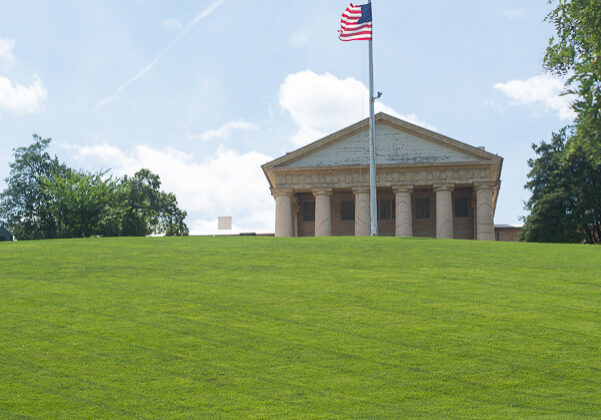
KEY CONTACTS
Housing Services Office
101 Bloxon St.
Bldg. 205, Rm. 139
Fort Myer, VA 22211
PH: (703) 696-3558
Army Community Service
202 Custer Rd.
Bldg. 201
Fort Myer, VA 22211
PH: (703) 696-3510
Marine Corps Community Service
1555 Southgate Rd.
Bldg. 29, Rm. 305
Joint Base Myer-Henderson Hall
Arlington, VA 22214
PH: (571) 693-5224
Army School Support Services
102 Custer Rd.
Bldg. 203
Fort Myer, VA 22211
PH: (703) 965-4950
Marine & Family Programs – School
Liaison Program
PH: (703) 693-8378
Most installation services will be available Monday through Friday, 9:00am to 4:00pm. As always, call first to confirm hours and availability of services.
Helpful hint: Contact these offices early in the week during the morning time.
About Joint Base Myer-Henderson Hall
Joint Base Myer-Henderson Hall (JBMHH) is comprised of three main installations that were combined during the last round of BRAC (Base Realignment and Closure): Fort Myer (Army), Henderson Hall (Marines), and Fort McNair (Army). These installations house headquarters units for the Army and the Marines. Of Washington (MDW). Major units within JBMHH include the 3rd Infantry (the Old Guard), HHC U.S. Army Garrison, HHC U.S. Army, the U.S. Army Band, 3rd Military Intelligence, CID/Washington District, National Defense University, White House Communications Agency, and The U.S. Army Military District of Washington (MDW) is the major command. tional Guard Bureau. The headquarters Battalion Marine Corps National Capital Region, is located at Henderson Hall.
Fort Myer is most well-known for its role in the highly honored duties of managing Arlington National Cemetery. The 3rd Infantry Division, the Army’s oldest infantry unit, was reactivated in 1948 and tasked with security of the greater Washington metro area, as well as taking on the role of the Army’s official ceremonial unit and escort to the president. The Old Guard participates in over 6,000 ceremonies yearly at locations like the White House, the Pentagon, and other national memorials in the Capital Region—that’s roughly 16 per day! They also hold the honor of keeping continuous vigil over the Tomb of the Unknown Soldier in Arlington National Cemetery.
Fort Leslie J. McNair (commonly referred to as Fort McNair) is located in D.C. and has been an Army post for over 200 years, making it the third oldest in U.S. history! It has been the site of many iterations of military education and leadership training, and today is best known as the home of the National Defense University.
Joint Base Myer-Henderson Hall is located in the northern tip of Virginia, right along the Potomac River and just south of Washington, D.C., and west of the Pentagon. Major commuter thoroughfares include Interstate 395, Interstate 66, the George Washington Parkway, US Hwy 50/Arlington Boulevard, State Route 27/Washington Boulevard, and VA Route 110/Richmond Highway. It is also well-connected to regional public transit options, including the Metro’s Orange and Silver Line at the Arlington Cemetery Metro station and numerous local bus routes.
Many active military and retirees in the area access Fort Myer to use the medical clinic or to shop at the large commissary or popular base exchange, but housing at JBMHH is minimal. At Fort Myer and Henderson Hall, accommodation is limited to a few barracks for single soldiers and historic housing reserved for extremely high-ranking officers (like Quarters One, home to the Chief of Staff of the Army). JBMHH supports personnel assigned to Fort Myer, Fort McNair, Henderson Hall, and the Pentagon, but you will be referred to Fort Belvoir, Joint Base Anacostia-Bolling, or Joint Base Andrews if you choose to live on post. Marines are authorized to apply for housing at Anacostia Naval Station.
KEY CONTACTS
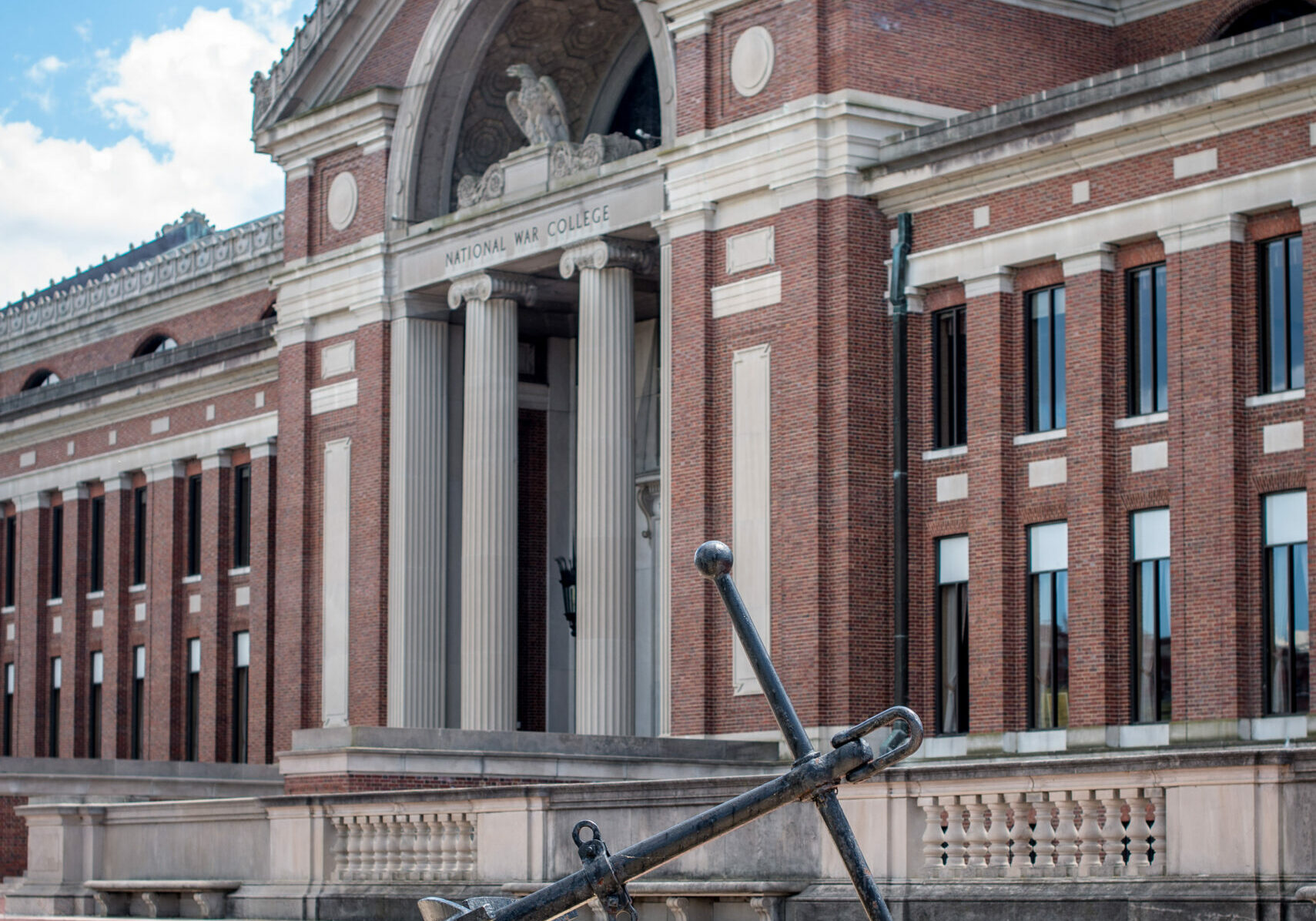
Housing Services Office
101 Bloxon St.
Bldg. 205, Rm. 139
Fort Myer, VA 22211
PH: (703) 696-3558
Army Community Services
202 Custer Rd.
Bldg. 201
Fort Myer, VA 22211
PH: (703) 696-3510
Most installation services will be available Monday through Friday, 9:00am to 4:00pm. As always, call first to confirm hours and availability of services.
Helpful hint: Contact these offices early in the week during the morning time.
About Fort McNair
Fort McNair has sat at the confluence of the Potomac and Anacostia Rivers in Washington, D.C, for over two centuries. In 1791, Major Pierre C. L’Enfant established a military reservation on the outcropping between the two rivers. By the early 1900s, the fort had two new major additions: a penitentiary and a general hospital. The hospital was the predecessor to Walter Reed Army Medical Center. At the same time, the penitentiary is most famous for being where the conspirators of President Lincoln’s assassination were imprisoned, tried, and executed.
Today, Fort Leslie J. McNair is best known as the home of the National Defense University. It is also home to the headquarters of the U.S. Army Military District of Washington and has a residence reserved for the U.S. Army’s vice chief of staff.
Support for the installation falls to Joint Base Myer-Henderson Hall (JBMHH), as Fort McNair technically falls under JBMHH. On-base housing usually gets referred to Fort Belvoir, Joint Base Anacostia-Bolling, or Joint Base Andrews. However, if ever there’s a reason to live in the District, this is probably the most ideal. Getting to and from Fort McNair is easy, with abundant public transit options. If you crave city living and are willing to sacrifice square footage and downsize to one car—this is your chance! If not, there are many feasible options farther from the city (Arlington, Bethesda, Alexandria) that offer a more suburban lifestyle but a longer commute.
KEY CONTACTS
JBAB Housing
Housing Services Center
21 MacDill Blvd.
Washington, D.C. 20032
PH: (202) 404-1840
Bolling Family Housing
Privatized Housing
8660 Angell St.
Washington, D.C. 20032
PH: (202) 562-2631
Bellevue Family Housing
Privatized Housing
(Enlisted only)
1 Cargo Ct., SW
Washington, D.C. 20032
PH: (202) 798-7127
Fleet & Family Services
(two locations)
1411 Parsons Ave. SE
Bldg. 101, Rm. 114
Washington, D.C. 20374</span
1043 Harwood St. SE
Bldg. 154
Washington, D.C. 20374
PH: (202) 685-0229
School Liaison Office
12 Brookley Ave.
Washington, D.C. 20032
PH: (202) 404-1014
Regional Navy Headquarters
Command SLO
2691 Mitscher Rd. SW
Bldg. 414
Joint Base Anacostia-Bolling
Washington, D.C. 20373
PH: (202) 433-2566
Most installation services will be available Monday through Friday, 9:00am to 4:00pm. As always, call first to confirm hours and availability of services.
Helpful hint: Contact these offices early in the week during the morning time.
About Washington Navy Yard
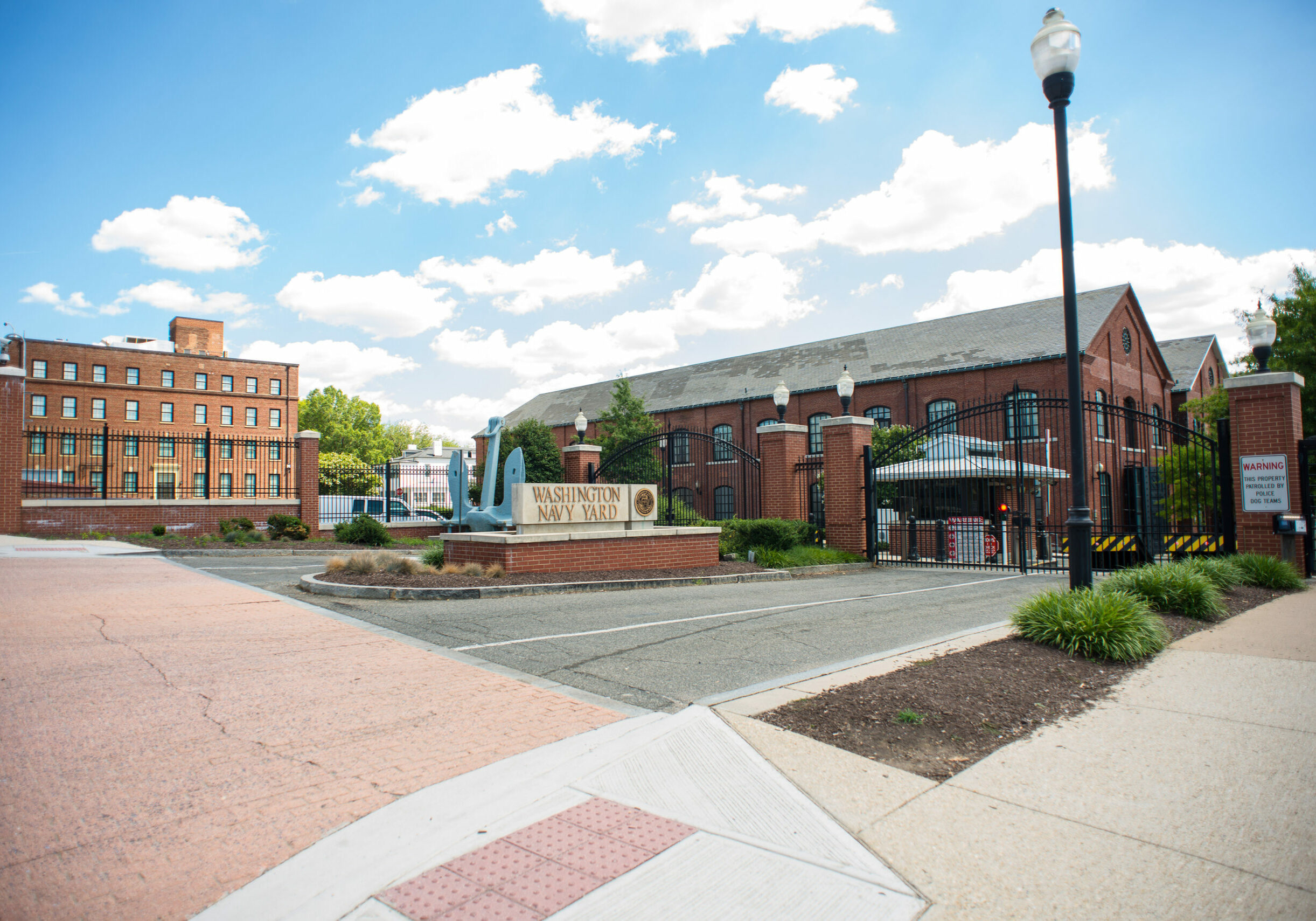
The Washington Navy Yard holds the distinction of being the oldest Navy installation in the country! George Washington himself set aside land along the Anacostia River for the installation, which was activated in 1799. The Yard’s primary function was shipbuilding and shiplifting, but by the 1850s, its focus shifted almost entirely to the production of naval artillery. In 1945, it was named the Naval Gun Factory, and the weapons created here were reportedly used in every war in which the U.S. fought until the 1960s. Eventually, ordnance production was phased out, and by 1964 the installation was redesignated as the Washington Navy Yard.
Today, the Navy Yard is known as the “Quarterdeck of the Navy” and is a ceremonial gateway to the nation’s capital. It is also home to the headquarters for Naval District Washington, which provides support activities for the Naval Support Facility Naval Research Laboratory, Naval Support Facility Suitland, Naval Support Facility Naval Observatory, Naval Support Facility Arlington, and Naval Support Facility Carderock.
In 2008, the Navy Yard acquired a new neighbor when Nationals Park was constructed as the new home for the Washington Nationals professional baseball team. This MLB team has helped the area tremendously by attracting restaurants, grocers, parks, and public-use amenities to the Southeast Riverfront. Two fantastic parks, Yards Park and Capitol Park are right on the river and are constantly abuzz with activity. The Eastern Market is a trendy food and arts market in the Capitol Hill neighborhood, and it lies only a mile north of the Navy Yard.
Military housing is offered at Joint Base Anacostia-Bolling, located just “East of the River,” but ample off-post accommodation is also available. However, if ever there’s a reason to live in the District, this is probably the most ideal. Getting to and from the Navy Yard is easy, with abundant public transit options. If you crave city living and are willing to sacrifice square footage and downsize to one car—this is your chance! If not, there are many feasible options farther from the city in Virginia and Maryland that offer a more suburban lifestyle but with a longer commute.
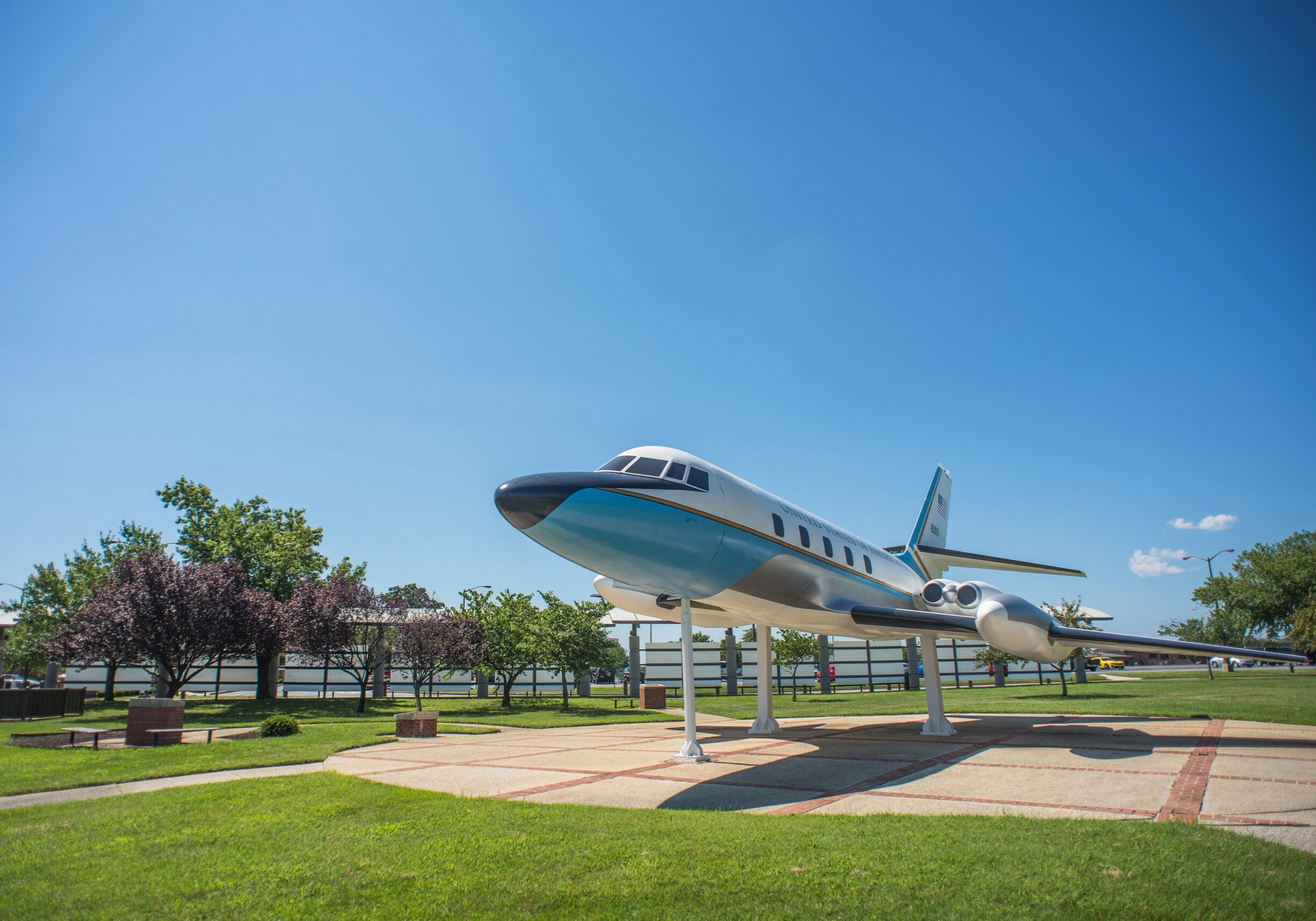
KEY CONTACTS
Liberty Park at Andrews
Housing Office
2097 San Antonio Blvd.
Joint Base Andrews, MD 20762
PH: (866) 944-7504
Military & Family Support Center
1191 Menoher Dr.
Joint Base Andrews, MD 20762
PH: (301) 981-7087
School Liaison Office
1191 Menoher Dr.
Joint Base Andrews, MD 20762
PH: (301) 981-9211
Most installation services will be available Monday through Friday, 9:00am to 4:00pm. As always, call first to confirm hours and availability of services.
Helpful hint: Contact these offices early in the week during the morning time.
About Joint Base Andrews
During the Civil War, Union soldiers repurposed a small country church into a headquarters as troops camped in the surrounding fields. In 1942, President Franklin D. Roosevelt ordered the construction of an airfield named Camp Springs on the grounds. It was later renamed Andrews Field after Lt. Gen. Frank M. Andrews and evolved into Andrews Air Force Base when the Air Force became a separate service in 1947. In 2009, the final rounds of BRAC (Base Realignment and Closure) combined Andrews Air Force Base with Naval Air Facility Washington to become Joint Base Andrews.
Both Joint Base Andrews and Joint Base Anacostia-Bolling fall under the command of the Air Force District of Washington (AFDW), which is headquartered at Joint Base Andrews. The 11th Wing is the host wing, while the 79th Medical Wing, Naval Air Facility Washington, USAF Honor Guard, USAF Band, and USAF Chaplaincy also call Joint Base Andrews home. Perhaps the most famed unit at Andrews is the 89th Wing, or “The President’s Wing.” This elite Air Mobility Command transports and receives VIPs from around the globe. Popes, kings, queens, prime ministers—you name it—all pass through the “Gateway to the Capital.”
On-base housing at Joint Base Andrews is a popular choice, and many people opt for on post over the communities immediately surrounding the base. Depending on your preferences for commutes, schools, and home prices, there are many other excellent home choices in Virginia and Maryland.
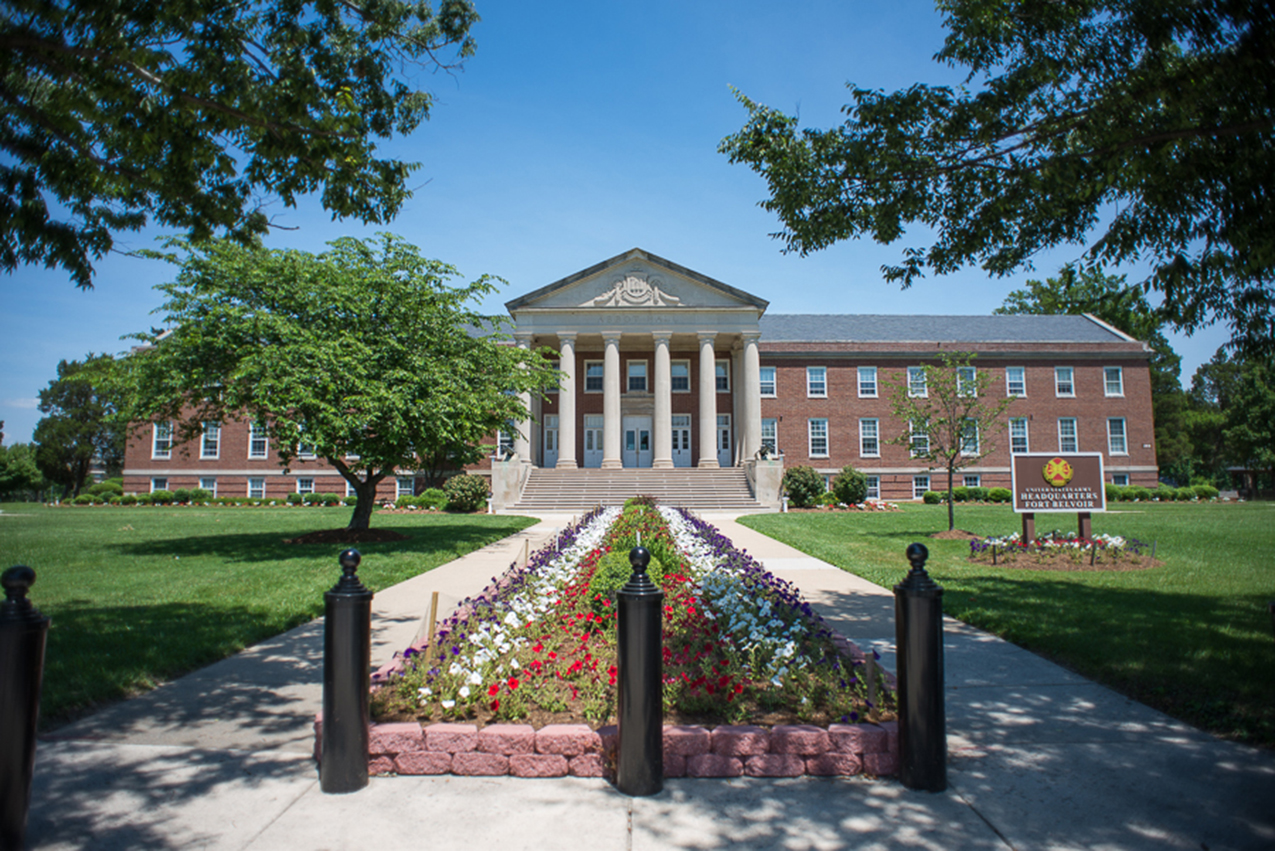
KEY CONTACTS
Housing Services Office
9851 Harding Pl.
Bldg. 258
Fort Belvoir, VA 22060
PH: (703) 806-3019
Army Community Service
5965 6th St.
Bldg. 1263
Fort Belvoir, VA 22060
PH: (571) 231-7001
Soldier & Family Assistance Center
5965 6th St.
Bldg. 1263
Fort Belvoir, VA 22060
PH: (571) 231-7000
School Support Services
9800 Belvoir Rd.
Bldg. 200
Fort Belvoir, VA 22060
PH: (703) 805-3436
Most installation services will be available Monday through Friday, 9:00am to 4:00pm. As always, call first to confirm hours and availability of services.
Helpful hint: Contact these offices early in the week during the morning time.
About Fort Belvoir
In 1741, the prominent Fairfax family moved into a grand estate named Belvoir on the banks of the Potomac River in Virginia. Just a few miles downriver was George Washington’s Mount Vernon. The Fairfax’s manor was lost to a devastating fire in 1783, but the site is now listed on the National Register of Historic Places. At the onset of World War I, the peninsula became an ideal location for a cantonment and training area for engineering units and was named Camp A. A. Humphreys. In 1930, it was renamed Fort Belvoir after renewed interest and archeological discoveries were made at the site of the historic mansion.
Today, Fort Belvoir is the largest employer in Fairfax County, with twice as many employees as the Pentagon. It has focused enormous effort and resources into preserving the natural beauty and wildlife surrounding the base. In 1980, the rifle and target ranges in the southwest corner of post were preserved to become the Accotink Bay Wildlife Refuge. This sanctuary makes up over a third of the land on Fort Belvoir, and its presence guarantees wildlife sightings of all kinds on post. The base’s perch on the Potomac River is both strategic and stunning, and most of the buildings are in the Georgian Colonial Revival style—symmetrical, red brick with massive columns. In French, “Belvoir” means “beautiful to see,” and the name is just as applicable today as it ever was!
The base comprises three geographic areas: the main base, Davison Army Airfield, and the Fort Belvoir North Area. It is located west of Interstate 95 and south of Interstate 496, known as “the beltway.” The major gates are situated off the VA-286/Fairfax County Parkway and US-1/Richmond Highway. Commuter options include vanpools, carpools, and buses with regional routes. There are no metro stops serving this base. However, you can get buses from the Springfield-Franconia Metro station and the Huntington Metro station.
The mission of Fort Belvoir is to be a “strategic sustaining base for America’s Army,” and the base houses a dozen major Army commands, 19 different Department of the Army agencies, and 26 Department of Defense agencies. Fort Belvoir Community Hospital and its two satellite clinics in Fairfax and Dumfries provide stellar patient care. The U.S. Army Cyber Command (ARCYBER), Intelligence and Security Command (INSCOM), and Defense Threat Reduction Agency (DTRA) also call Fort Belvoir home.

KEY CONTACTS
Lincoln Military Housing
13201 Perkins St.
Quantico, VA 22134
PH: (703) 784-2711
Marine Corps Community Services
3019 Embry Loop
Quantico, VA 22134
PH: (703) 432-1901
Marine Corps School Liaison
Little Hall
2034 Barnett Ave.
2nd Floor
Quantico, VA 22134
PH: (703) 784-4729
Most installation services will be available Monday through Friday, 9:00am to 4:00pm. As always, call first to confirm hours and availability of services.
Helpful hint: Contact these offices early in the week during the morning time.
About Marine Corps Base Quantico
What was established as a humble Marine barracks in 1917 evolved into a massive installation coined “The Crossroads of the Marine Corps.” Marine Corps Base Quantico occupies roughly 55,000 acres of land in southern Prince William County, northern Stafford County, and eastern Fauquier County. It is bordered to the east by the tiny town of Quantico, which the base has almost completely engulfed. Unique among military installations, the public has access to the base and housing areas. There’s also a publicly accessible commuter train station on base with service for both the Virginia Railway Express and Amtrak.
As the home of the Marine Officer Candidate School, every Marine officer will train at Quantico, and many enlisted Marines will also pass through its gates. The Expeditionary Warfare School, Command and Staff College, and the Marine Corps University are also located at MCB Quantico, attracting senior-ranking Marines and officers from across the services. There’s also the Marine Corps Brig, Marine Corps Combat Development Command, and the Marine Corps Research Center at Quantico. The FBI, DEA, and the DIA (Defense Intelligence Agency) have training academies on base, and Marine One’s helicopters are also stationed here (you know...the folks who fly the president!).
Living off post is popular, as base housing is usually reserved for students attending one of the many schools or training facilities or for international exchange officers. The nearby town of Stafford is a popular choice, as well as Woodbridge or even farther north for the reverse commute. Spend time on our neighborhood guides—especially the commute sections—to get an idea of the area. Those stationed at MCB Quantico often do a follow-on assignment at the Pentagon or another area installation. You’ll want to consider that possibility, and the commute implications, if you’re thinking of living in Stafford or any other suburb in the Southern NOVA.
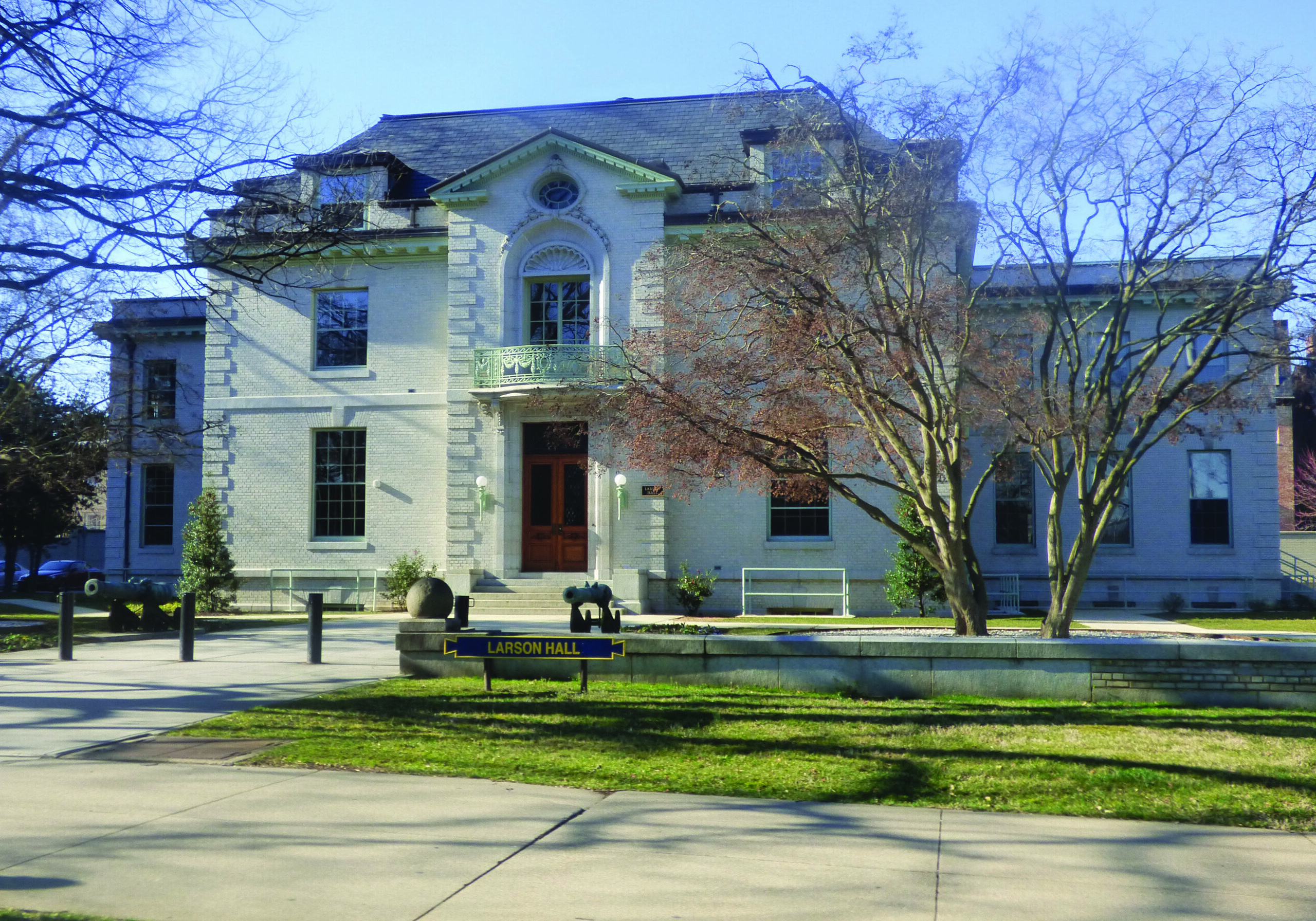
KEY CONTACTS
Navy Housing Service Center
Naval Support Activity Annapolis
349 Kinkaid Rd.
Annapolis, MD 21402
PH: (410) 293-9739 or (410) 293-9731
Email: AnnapolisHousing@navy.mil
Unaccompanied Personnel Housing
58 Bennion Rd.
Annapolis, MD 21402
PH: (410) 293-9067 or (410) 293- 9070
Lincoln Military Housing
349 Kinkaid Rd.
Annapolis, MD 21402
PH: (410) 919-4548
Email: annapolis@lpsi.com
Fleet and Family Support Center
168 Bennion Rd.
Annapolis, MD 21402
PH: (410) 293-2641
Email: m_ffsc_annapolis@navy.mil
School Liaison
168 Bennion Rd.
Annapolis, MD 21402
PH: (410) 293-2605
Email: NavySLO.NSAA.FCM.fct@navy.mil
Most installation services will be available Monday through Friday, 9:00am to 4:00pm. As always, call first to confirm hours and availability of services.
Helpful hint: Contact these offices early in the week during the morning time.
About United States Naval Academy
The United States Naval Academy—part of Naval Support Activity (NSA) Annapolis—is located on the east end of the beautiful capital city of Annapolis, Maryland. Adjacent to the Chesapeake Bay and bordered by the Severn River, Annapolis' landscape is characterized by water. Several creeks branch off the river and meander through the city, adding to the nautical vibe.
The Naval Academy was founded in 1845 and is a four-year, coeducational service academy. Graduates are commissioned as officers in either the U.S. Navy or U.S. Marine Corps. Like the other service academies, there's some lingo specific to the USNA—be in the know before you arrive! The student body is known as midshipmen, and students are not called freshmen, sophomores, etc., but fourth class, third class, second class, and first class. The fourth class is also known as "plebes." The grounds of the Naval Academy are called the "Yard," There are many monuments to prominent figures and events in naval history alongside buildings of historical and architectural significance. Massive Bancroft Hall houses the entire brigade of midshipmen—more than 4,400 students—and is the largest dormitory in the world.
Athletics are a big deal at the Naval Academy and are not optional for the midshipmen. Any student who is not a varsity team member is required to participate in intramural sports. The rivalry with the United States Military Academy cadets is the stuff of legend, and the annual Army-Navy football game is one of the most important dates on the calendar. Beating Army in any sport is significant, so much so that teams that beat Army in the athletic year wear a gold star on their varsity letter patch to denote the victory.
Many stationed at the Naval Academy love the experience of living in the Yard and immersed in Academy life. These historic homes are at a premium. Due to either a lack of availability or a desire for more space or separation, others choose to live in the surrounding communities. Due to the city's vibrancy, living in Annapolis is particularly desirable among single service members and young couples. Families prefer the surrounding suburbs of Arnold, Millersville, and Crownsville with their top-notch schools.
About Fort Meade
Fort Meade is the nation’s information, intelligence, and cyber operations center. It is home to several major federal agencies, including the big one—the National Security Agency (NSA). Fort Meade is also home to the Defense Information Systems Agency, the Defense Media Activity, the Defense Information School, the Defense Courier Service, the United States Army Field Band, and the United States Cyber Command (established at Fort Meade in 2009). Fort Meade, Maryland’s largest employer, with a focus on intelligence and security, expects to find a lot of smart folks here. Here’s a fun fact: The NSA was once the largest employer of mathematicians in the world!
The area around Fort Meade is suburbia at its best. Situated between Washington, D.C., and Baltimore, a posting at Fort Meade means easy access to the rich cultural opportunities these two cities offer without the downsides of city living. Some of the nation’s best museums, first-rate theaters, and historical sites are a quick trip away. Sports fans will also rejoice in having two NFL teams, an NHL franchise, an MLB team, and an NBA team nearby.
This area of Maryland is ideal for families and children. The ubiquitous planned communities and subdivisions that pepper the region often have family-friendly amenities, including playgrounds, swim teams, and bike trails. Howard County and Anne Arundel County schools are top-notch.
Traffic is a fact of life in Maryland, and residents quickly learn the ins and outs of the major thoroughfares. Rush hour lasts far longer than an hour—expect heavy traffic to begin as early as 6 a.m. and to last well past 7 p.m. Be sure to research commuting options and get a feel for the commute to Fort Meade during peak travel times. Many towns around Fort Meade offer alternate routes, but understand that traffic will be heavy on both major roads and side streets.
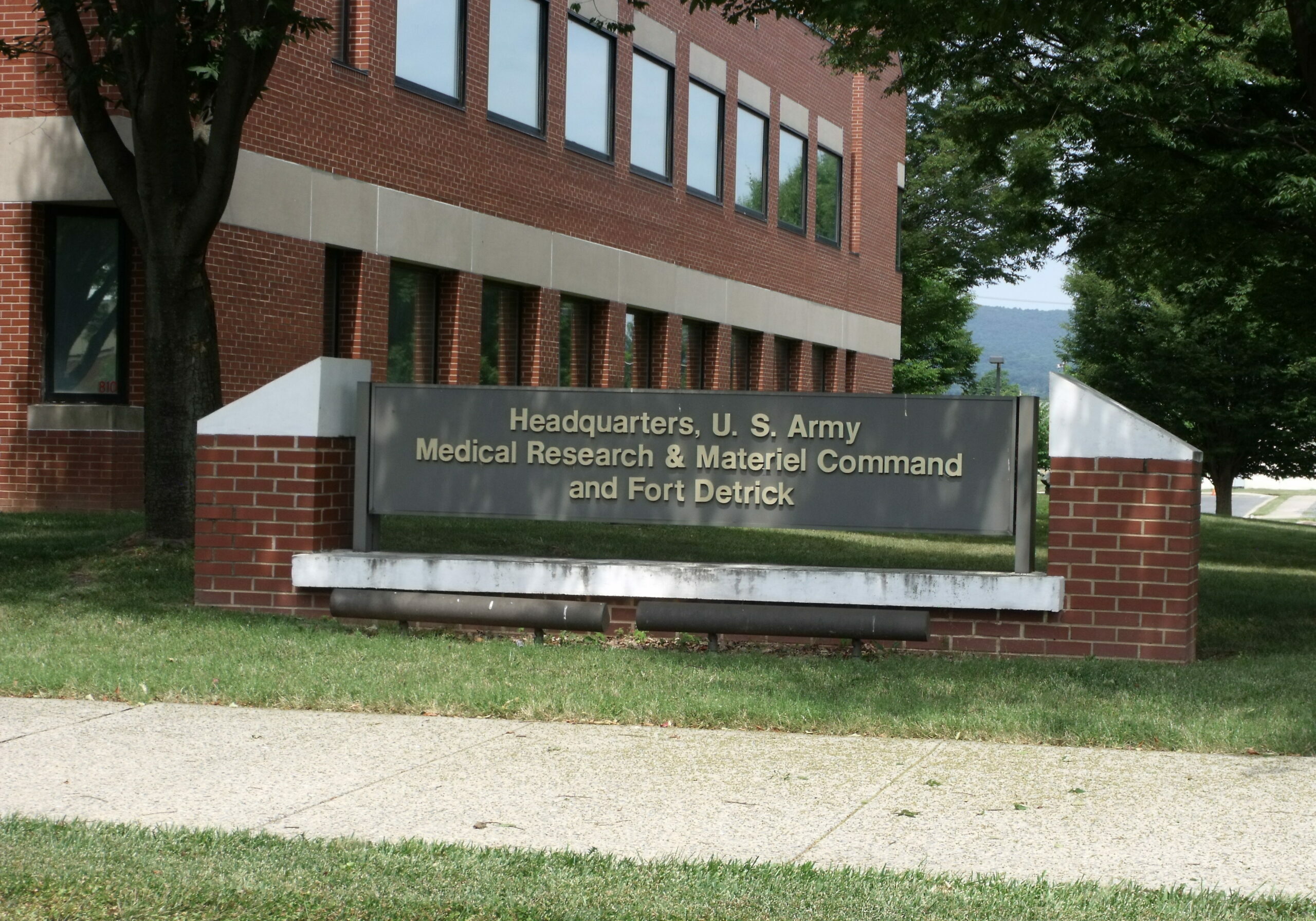
KEY CONTACTS
Housing Division
Community Support Center
1520 Freedman Dr. Room 202
Fort Detrick, MD 21702
PH: (204) 379-6410
Detrick Homes
6000 Ditto Ave.
Frederick, MD 21702
PH: (240) 379-6518
(855) 969-4210
School Liaison Office
949 A Sultan Drive
BLDG 949
Fort Detrick, MD 21702
PH: (301) 619-7143
Army Community Service
Community Support Center
1520 Freedman Dr. Room 124
Fort Detrick, MD 21702
PH: (301) 619-2197
Most installation services will be available Monday through Friday, 9:00am to 4:00pm. As always, call first to confirm hours and availability of services.
Helpful hint: Contact these offices early in the week during the morning time.
About Fort Detrick
Located in central Maryland, Fort Detrick is home to the U.S. Army Medical Research and Material Command (USAMRMC). Established in the 1930s, what was once pastoral farmland was transformed into Area A (the main base area) and The Farm (test areas). The base is now home to the Army Medical Research Institute of Infectious Diseases (AMRIID) and the National Cancer Institute. Fort Detrick is the epicenter of biomedical research and hosted biological warfare research and development in its early years. These controversial programs were discontinued in 1970, but the lore remains, and many contagion-themed movies and TV dramas are set at Fort Detrick.
While choosing where to live can be daunting, the great news is that once settled; most people love their bubbles! School choices, especially in Northern Virginia, are abundant, and career opportunities abound as D.C. is host to professionals in various fields.
Commuting to and from Walter Reed in Bethesda is also something to consider, depending on what you or your service member’s job requires. Just be aware that 40 miles separate Fort Detrick and Forest Glen Annex. Forest Glen Annex, in Silver Spring, is under Fort Detrick's command but is located on the Walter Reed complex.
Looking at relocating?
Enter your information below and we will reach out to help the process.
7 Reasons You Should Consider Buying a Home
1. TAX ADVANTAGES
To encourage homeownership, the IRS has provided many tax breaks for owning a home. Credits may be available for specific home improvements, such as using clean energy or for qualified first-time home buyers. The way most homeowners see those advantages is through income tax itemization and deductions like mortgage interest and real estate taxes.
2. STABALIZE MONTHLY HOME COSTS
Owning your own house is one of the safest bets on stabilizing your monthly home costs. There’s no worry of rent getting increased significantly after each year of living in someone else’s home. Additionally, when you answer to yourself, there is no worry of landlord changes or unexpected lease termination.
3. HOUSE HACKING
Generally speaking, house hacking is a smart strategy that involves renting out a portion of your primary residence as a means of generating income to offset your own living expenses. Think turning your finished basement or mother-in-law quarters into an AirBnB! Or consider purchasing a multi-unit duplex or triplex: live on one side and rent out the other! If your home making money while you’re living in it doesn’t sound like your thing, there’s always renting it out after you PCS as an income generating investment property.
4. Increased Privacy
Generally speaking, house hacking is a smart strategy that involves renting out a portion of your primary residence as a means of generating income to offset your own living expenses. Think turning your finished basement or mother-in-law quarters into an AirBnB! Or consider purchasing a multi-unit duplex or triplex: live on one side and rent out the other! If your home making money while you’re living in it doesn’t sound like your thing, there’s always renting it out after you PCS as an income generating investment property.
5. Pets Are Welcome!
For those who choose to rent instead of buying, it can be extremely difficult to find rentals who allow for your
four-legged, furry friends. Landlords often require hefty pet deposits or place heavy restrictions on the number of pets and breeds they allow—if they will even allow pets. When considering quality of life, including beloved pets and the indoor and outdoor space available to them matters. Having the flexibility to include ALL members of your family as a homeowner is priceless!
6. Pride of Ownership
One of the greatest benefits of owning your own home is the pride of ownership that comes along with it. Not only are homeowners more inclined to take good care of their investment with routine maintenance and cleaning, but also they are free to make design choices ranging from hanging artwork on the walls, to paint colors, to customization of closets, electronics, and more. As military families who relocate frequently, having your home reflect who you really are feels important.
7. Safe and Stable Long Term Investment + Forced Savings
Owning a home has historically been one of the safest, lowest risk financial investments that tends to have long-term stability and success. As your home value appreciates and your mortgage balance decreases, what’s left is growing equity with an eventual paid off home. Making a monthly house payment is akin to setting aside a specific amount each month into a savings account—it’s a little difficult to access in the moment, but over time it can build into something significant in the form of equity.

FIVE RESOURCES TO HELP YOU IN YOUR RELOCATION PROCESS

Your PCS is underway!
The home buying and moving transition process has begun. Now what? If it feels like there are a million things to do, don’t fret because you don’t have to do them all yourself. During the relocation process, there are many service providers that can assist you in making your move a smooth one.
Consider these five resources to help you in the process
1. MOVING COMPANIES
Sure, the military offers transportation and relocation services, but many service members decide to coordinate the transfer of household goods themselves. Not only can you often earn money on the difference between moving costs and weight allowances, but you can be assured that you have more control over your belongings. Services that moving companies offer can range from delivery of boxes and pods for the “you-pack” model all the way to full-service logistics companies that will do all of the packing, loading, driving, and unpacking for you.
2. STORAGE
Whether you need to store your household goods for a few weeks until you close on your home or you decide that you have more stuff than square footage, storage companies abound. Sizes, conditions, and contracts vary widely so be sure to do your homework before you commit. Particularly in climates with extreme cold, heat, or humidity, it is important to consider using only climate-controlled storage to ensure the protection of your furniture and temporarily unused items.
3. TEMPORARY HOUSING
It is not uncommon for there to be a short gap of time during a military move between when you arrive at your new duty station and your new home being available to inhabit. No longer are hotels the only option for sticking out a few days or weeks during the wait. Vacation Rentals by Owner (VRBO) and Airbnb are great options to make you feel more at home while you wait for your home. In fact, why not take advantage of seeing your new city through the eyes of a tourist? Find a location near new local attractions and dining and enjoy a few days of getting to know the lay of the land.
4. USPS/IRS
Once you get settled in at your new home, it’s important that you alert agencies that will make sure your current and up-to-date address is on file. The United States Postal Service (USPS) and the Internal Revenue Service (IRS) are two of the most important and by doing so, any important mail or documents in your name should be forwarded or sent along to your new address. It’s also a good idea to notify banks, credit card companies, and other debt collectors of a change of address. These days nearly all of these transactions can be handled online.
5. DISCARD & DONATE SERVICES
No matter how much you purge, toss, organize, minimize, or donate before you pack up the moving truck, it never fails that after you get unpacked on the other side there seems to be more stuff to declutter. Discard and donate services can help with this. Many are a phone call away and will happily come to your residence for a pickup. Others are structured where you simply drop off at a store. A lot of these services are charitable organizations and will offer you documentation for your own taxes based on your donation. It’s a win-win: you downsize by donating, and someone else benefits from your use of your items.

